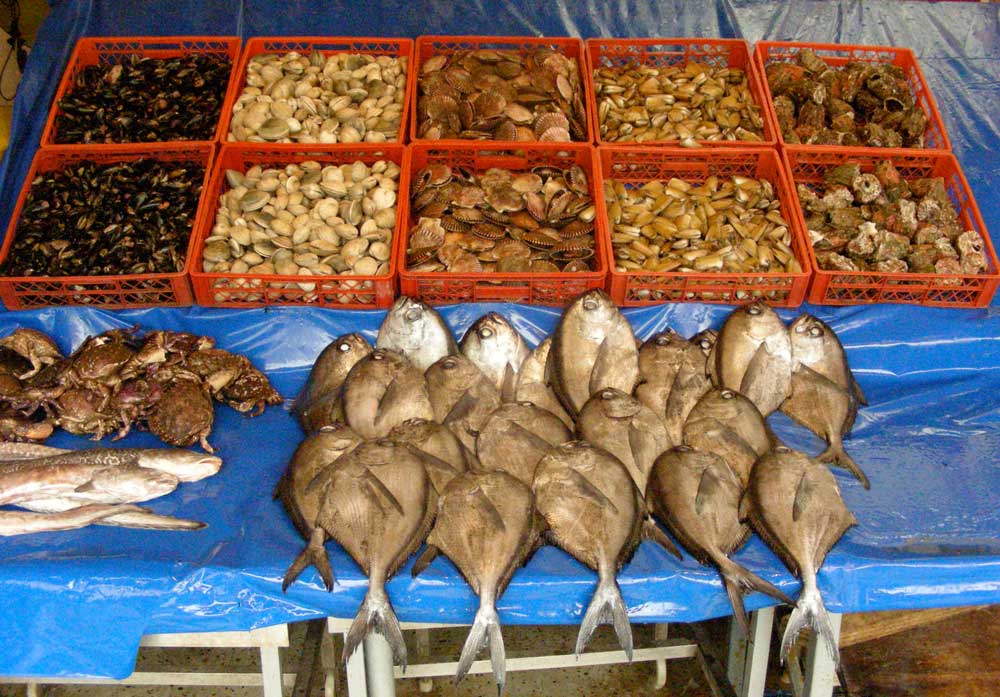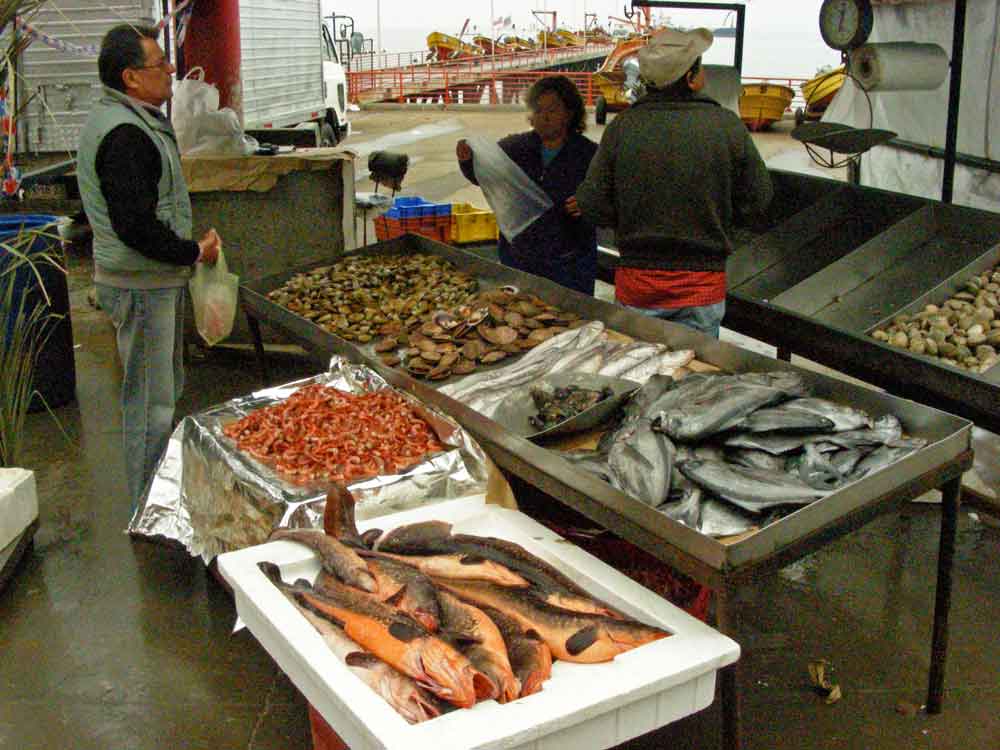Foodie reasons for visiting Chile, number 1: fish and seafood
Firstly, because they’re so good, and the centre of much the most interesting Chilean food; and second, because, at least for anyone from the Northern/Atlantic hemispheres, they’re so fascinatingly new and unfamiliar. The most popular fish are reineta, congrío and corvina, and a star among the range of shellfish are machas. According to Chilean resident Jim Stuart, in his hugely informative Eating Chilean blog (http://eatingchile.blogspot.com) reineta is officially pomfret or southern bream in English; Congrío is conger, and the most celebrated Chilean fish, which comes in three kinds: colorado or red, the one that generally has the best flavour; negro or black, and the rarer golden or dorado. In Spain and Mexico the name corvina is often translated as sea bass, which is incorrect in the first place, and in any case the southern Pacific corvina eaten in Chile is smaller and tastier than the Atlantic variants, and properly translated as a drum or a croaker. Ever eaten one? Probably not.
All three fish are fabulous in Chilean ceviches. Machas, meanwhile, are surf clams, one of the most traditional foods of coastal South America, and found off beaches from Chile to Peru. Traditionally, they were harvested – and in some places still are – by beach fishermen wading into the sandbanks just offshore and, sometimes at great risk from riptides, disturbing the sand with their feet to shuffle up any machas just below the surface. Nowadays, airlines and snorkels have made macha fishing a little easier, but it’s still hard work.

Jim Stuart also informs us that apparently Chileans no longer eat as much fish as they used to, or maybe ought to do, because the fact that Chile is one of the world’s biggest fish exporters means that domestic consumers have to compete with big-scale fish-buyers from Asia and the rest of the world, which pushes up prices.
This is not something you’d imagine after a short time in the country, as fish and seafood are fixtures on most menus, even in simpler restaurants, and make up many of the most treasured Chilean dishes.
And any decline in Chilean fish culture is least evident at the fishermen’s market on Valparaíso’s waterfront, where restaurant buyers and ordinary individuals come to buy fabulously fresh fish and shellfish truly straight from boat (which may be pulled up alongside the stall with today’s stock). Which is handy, of course, so long as you have somewhere to cook it.
Beyond any fish-consumption crisis, the one strange thing about Chileans’ seafood-eating habits that can be rapidly apparent to any outsider is their obsession with mixing fish, seafood and cheese, a combo that appears in all sorts of dishes. One of the most popular ways of eating machas is a la parmesana, coated in a parmesan cheese gratin, a ‘Chilean classic’ apparently invented by an Italian immigrant chef in the 1950s, who decided to celebrate his new home and appeal to Chilean tastes by doing something he would never have been allowed to do in Italy, and coat shelffish in cheese.
You get used to it: and one of the Chilean seafood standards that’s most worth trying is the chupe de locos. Locos in Chile doesn’t just mean mad people but also the Pacific abalone, one of the country’s most traditional foods, and a chupe is a thick cheese-based, chowder-like soup, with a gratinated top. You can have chupes with many ingredients, but the most popular is with locos. Strangely enough the hefty cheese doesn’t destroy the flavour of the seafood, and it’s deliciously satisfying on a cold day (which, given Chile’s ocean weather, can happen).

As a frequent traveler to Chile. This was very helpful.